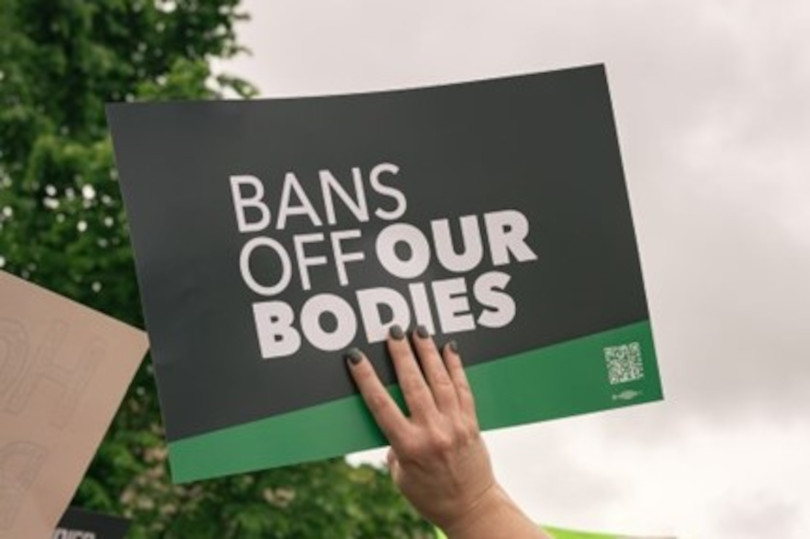Exploring the Parental Notification Law Adjusted for Minors Seeking Abortion
In this day and age, with all the varying political perspectives and changing policies, it is important to take a step back and examine where we were in comparison to where we are today. A particularly highly debated topic, the laws around abortion have been something that many American women and minors have struggled with. Currently, most abortions are banned in 14 states following the Supreme Court’s decision to overturn Roe v. Wade. Women and minors’ full access to abortion has once again been ripped from their fingers and placed into the hands of their state legislature.
Remembering June 25th, 1990 – the day the parental notification law was adjusted for minors seeking abortions – may give the pro-choice advocates of today hope. It also provides a chance to re-analyze history to finally get to where we want to be.
Quick Disclaimer: The parental notification law adjustment still had its limitations, and did not fully solve the issue of minor’s limited access to abortion throughout the United States. The law served as more of a step up from the more strenuous limitations prior.
Making sure to also explore cases such as the Ohio v. Akron Center for Reproductive Health and Hodgson v. Minnesota are ways to more critically understand how this decision was made and how pregnant minors were critically affected by limited access to abortion.
Let’s explore.
The Roe v. Wade 1973 Rule & The Supreme Court 1990 Newly Added Alternative
In 1973, the Roe v. Wade case ruled that pregnant women generally had the liberty to have an abortion. While this did allow women the right to an abortion, this wasn’t fully true for young girls. Many states still required both parents to be notified, and this did not change until the June 25th, 1990, U.S. Supreme Court ruling. The ruling indicates that states may require a teenage girl to notify both parents before obtaining an abortion as long as the law provides the alternative of a judicial hearing for pregnant girls who do not want to inform their parents of their decision. Simply put, rather than prohibiting abortions for pregnant minors unwilling to provide parental notification, they could have a judicial hearing.
Before the law’s adjustment, pregnant minors trying to obtain an abortion without completing parental notification were faced with a task that could be very difficult to accomplish. The Ohio v. Akron Center for Reproductive Health case, and Hodgson v. Minnesota case helped put these difficulties into perspective.
Ohio v. Akron Center for Reproductive Health
The Ohio v. Akron Center for Reproductive Health case called into question whether the judicial bypass requirements, held in place in 1989, violated a minor’s Fourteenth Amendment due process right. The case involved an abortion clinic, one of its doctors, and a minor seeking an abortion who sued in federal court and claimed that the judicial bypass procedures the law required violated a minor’s Fourteenth Amendment due process right. Ultimately, the court concluded that the judicial requirements did not violate a minor’s Fourteenth Amendment because it satisfied the four factors used to determine the constitutionality of this type of issue consent statutes.
The four factors are:
2) Whether she was allowed to show that the abortion is in her best interest
3) Whether the judicial bypass procedure took reasonable measures to ensure the minor’s anonymity
4) Whether the statute set reasonable time limits for judicial action.
Yet, Justice Harry A. Blackmun wrote a dissenting opinion that argued that the judicial bypass procedure created a system that was a “tortious maze” and lacked the sensitivity required when dealing with such an intimate decision.
Legally the “maze” was sound but in the real world, full of varying realities and complex situations, the “maze” wasn’t easy to navigate.
Hodgson v. Minnesota
This Minnesota case similarly begged the question of whether Minnesota’s abortion notification statute unconstitutionally restricted a minor’s access to having an abortion. Section 2 of a Minnesota statute regulation regarding a minor’s access to abortion, prohibited access to procedures until 48 hours after both their parents had been notified. Medical emergencies and women who were victims of parental abuse were the exceptions. Alternatively, Section 6 of the law allowed the courts to judicially bypass Section 2 if the young woman could maturely demonstrate that notification would be unwise.
The court found Section 2 of the statute to be unconstitutional because requiring notification of both parents, whether or not both wanted to know or had taken responsibility for raising the child, did not serve as a legitimate state interest.
Final Reflection
The ultimate question here is, how much control should the government or your local state legislature have over pregnant minors’ abortion decisions? Creating legal barriers for a situation that is already tough and extremely unique, person to person doesn’t seem like the best response to a teenage pregnancy. As a teen, your life is just beginning. For many a sudden pregnancy, whether it be due to rape or accidental, can derail the life of a teen and potentially the life of that teen’s child.
As Advocates for Youth explains, Research has shown that these laws, which disproportionately impact young women of color and immigrant youth, often delay or prevent young people’s access, endangering their health and safety. Young people deserve the right to access the full range of reproductive and sexual health services they need, explains Advocates for Youth, legislation which seeks to protect people’s access to abortion must include young people and protect their access to safe, legal, and affordable abortion care. For a teen, life is already hard enough – full of mistakes that hopefully lead to growth. Protecting our youth, encouraging them to grow, and standing up to unreasonable legislation are all necessary if we want to attain change.


